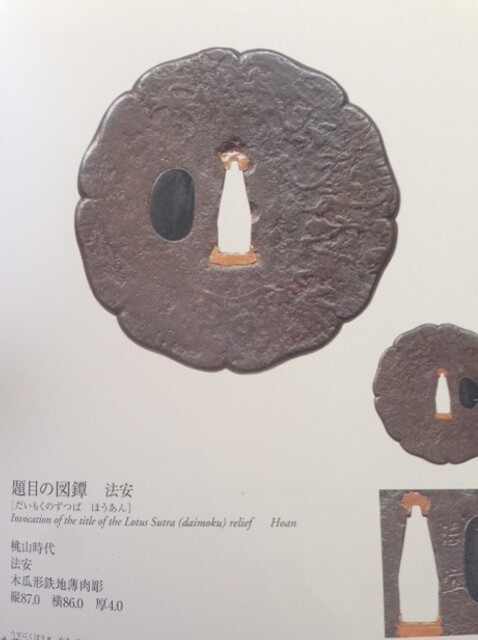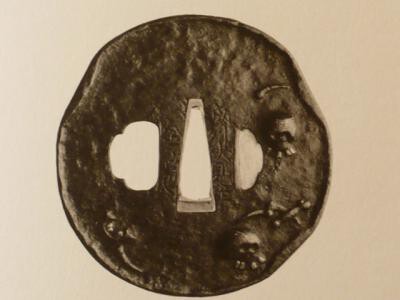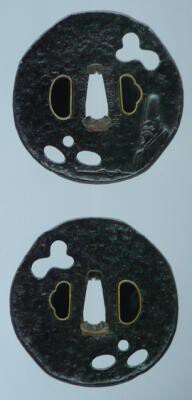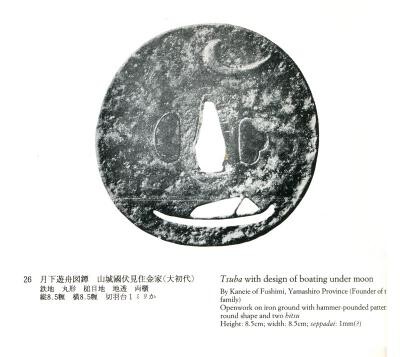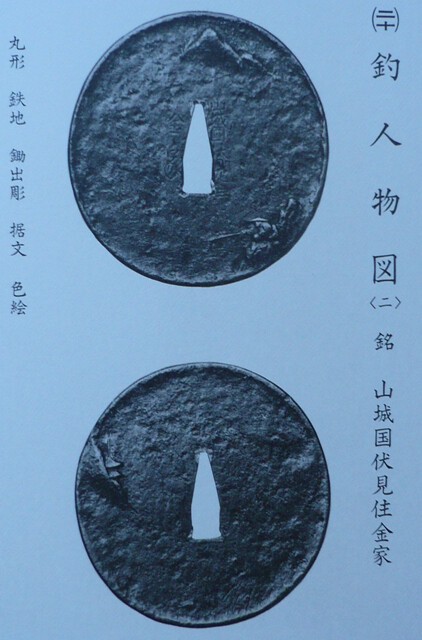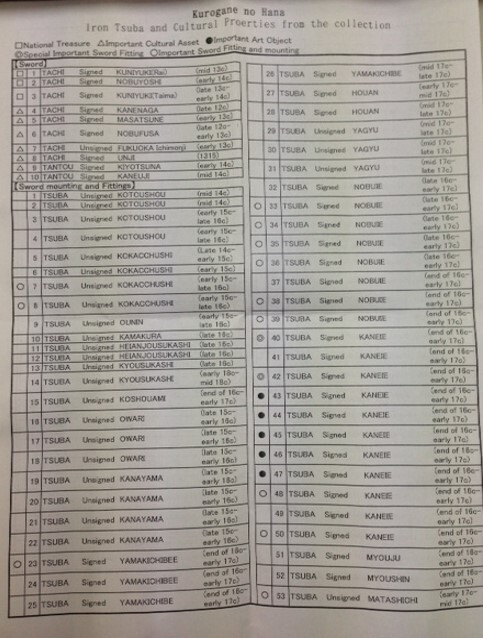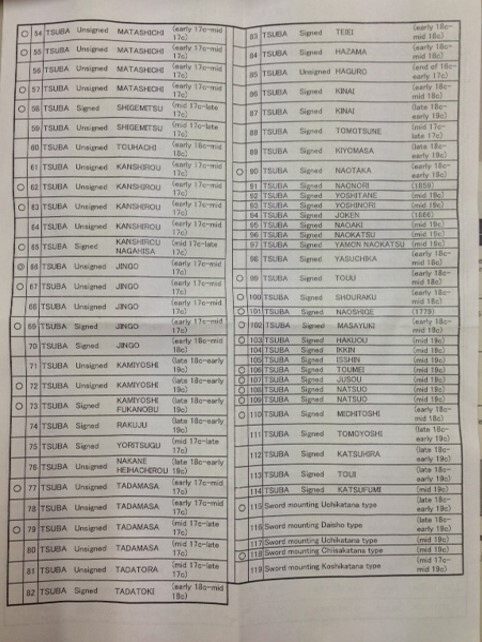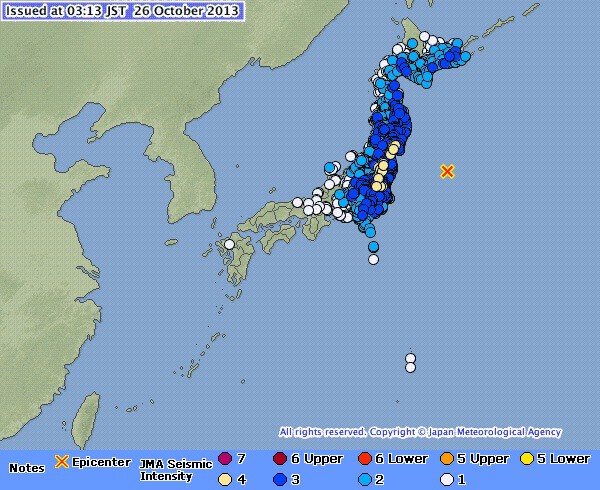-
Posts
1,813 -
Joined
-
Last visited
-
Days Won
8
Content Type
Profiles
Forums
Events
Store
Downloads
Gallery
Everything posted by Henry Wilson
-
Thanks Guido. That is something I have suspected. It would take some serious hard work to strip the patina of a tsuba though.
-
Thanks Curran for your thoughts. Can you elaborate on this a bit more. What sort of things is sun radiation good or bad for? A very good point.
-
Hi David Yes, I have heard about the horse hair brush method too. I have looked for such a brush in Japan but so far can only find squirrel hair!!!! I wonder if which animal hair would make a difference.
-
Thanks to everyone who has posted their comments. Chris, how about rubbing the iron only with a small piece of cotton and working around the brass and not rubbing it. Have you tried that? It would be difficult to do but it might allow the brass to mellow, but give the iron the desired attention. The sun method is intriguing because the other day, by accident, I left a tsuba in need of TLC in the sun for a few hours. When I got back to it I was sure that the patina had become glossier, but thought it was my imagination. After reading from Mike Y at viewtopic.php?f=2&t=15021 I wonder if there is anything in the sun method. It would be great if Mike could comment on this. The application of choji oil is another technique that I can't figure out. On a sword, it is applied and then removed periodically. In my mind, the application of oil on a tsuba will not have a positive effect. It could make it sticky, possibly stain the walls of sukashi or the nakago ana, and prevent the patina surface from making contact with the atmosphere and thus halting any further patina development.
-
I am not asking about repatination. I am wondering about the TLC that many people refer to when a tsuba lacks a luster.
-
There has been some talk recently about restoring iron tsuba and wonder if anyone can tell me what works for them? I am not talking about the removal of red rust. I am interested in what needs to be done after this when the bad rust has been removed, the patina is there but is quite dull and dry. To help develop the sheen on an otherwise dry and lifless, but none the less patina intacted iron tsuba, collectors seem to refer to this as TLC (Tender Loving Care) and apart from lots of hugs and kisses that this title implies, it seems to cover some of the following: -Gentle rubbing with a clean cotton cloth seems to be universally accepted by people. Also carrying the tsuba in a cotton pocket or a cotton pouch as Sasano discusses in his gold book if I recall corrcetly. The pocket techinque is not advisable if the tsuba has any soft metal inserts such as lead plugs or copper sekigane as it will remove old patina which is hard to replace. I wonder, how does rubbing an iron tsuba help develop a sheen? -Rubbing the tsuba with anything other than cotton is not advisable, especially anything synthetic. It is said to make the tsuba look oily. -The application of a little choji oil seems to be encouraged or discouraged depending on who you talk to. What are the pros and cons for both these techniques? -Letting the tsuba hang in a relatively humid place where the air is clean and free from pollutants. What happens to develop a sheen? I assume the tsuba would need to be rubbed occassionly with a dry clean cotton cloth. -A recent techinque that I never heard of before is giving the tsuba some sun. How does sun light develop a sheen? -Handling the tsuba with clean bare hands. I assume that the natural oils form hands will help the sheen. What are other members take on these techniques? Do they work? Do you have any more to add or any other comments to make? Thanks for reading
-
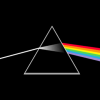
Dai Token Ichi
Henry Wilson replied to raiden's topic in Sword Shows, Events, Community News and Legislation Issues
Reminds me a bit of some weddings I have paid an arm and a leg to attend. -

Dai Token Ichi
Henry Wilson replied to raiden's topic in Sword Shows, Events, Community News and Legislation Issues
Love the 外国人 banners. What is that all about? It certainly adds to the ambience...... -
Another bad boy that was on display was this one. Paul and I and a few other visitors had a good look at it and enjoyed it together. Hoan tsuba are not that common I have found and I was delighted to see this group nicely represented, but only with two tsuba as examples. This might demonstrate the rareity of Hoan. Amongst the Yamakichibei displayed, this tsuba was one of the most memorible for me. I can remember a long time ago someone discussing why a shakudo plug has been used, as it is such a mismatch for the colour of the tsuba. The tsuba in reality is a very dark colour, while not as dark as shakudo it really is very different to what is seen in the picture (how did they get a grey colour?). Basically, it is as close in shade to shakudo that iron can get. If I recall correctly Paul commented it looks like chocolate.
-
I went to the NBTHK Kurogane no Hana display yesterday. It was wall to wall with the best of iron tsuba that I have ever seen in one room. It was quite impressive. A lot of the pieces are familar and since pictures were not allowed to be taken, I have trawled around and found published pics of some of the displayed pieces. Starting with Kaneie: I think it was this one on display. The Nike logo shaped moon was the main detail I vividly recall. And my all time favourite tsuba was there too. Sorry about the blue picture. : Kaneie tsuba are truly spectaular. Something I found very striking was the thinness of the plates, the height of the carving relief in comparison and the exceptional colour that can only be described as a black with brown under tones and a very subtle moist appearing patina. The addition of any gold inlay to highlight details is skillfully applied as well. A real treat I must say. I was also lucky enough to meet Paul Martin too who was with a sword study tour from the Keio Plaza hotel. Everybody seemed to be enjoying what was on offer and Paul was mingling with the visitors (myself included) and chatting about this and that. The Nobuie on display were superb (I can't find any pics of them at the minute) but they represented all the work styles associated with Nobuie including the roundish plates, the turtle shell fret pattern, open work wheel shaped tsuba and the four lobe shaped peices that Nobuie is famous for, as well the subtle convex plain. Also there was the kebori style carving with waves, vines and pictotial scenes. The Nobuie jimon surface finish, as well as the typical patina was there for all to see. Paul and I both agree that no matter how often we look, each time, there is a certain emotional response that is very pleasant. The only disappointing thing was the English translations of the exhibition notes were pretty terrible and made little sense at times. Being the well-read scholar that I am I could rely of my many years of earnest study to decipher what the NBTHK was trying to say. However the volume of non Japanese passing through when I was there was significant and I think they would not have learnt much from the nonsense placards. I ask why not have some one proficent in English review the placards...? Also it is a pity that the NBTHK did not make a publication to accompany this display. It they did it would be one of those "must have" books that all tsuba collectors should own. I hope to be able to visit again before the the display ends. At 600 yen for admission, it is the best money I have spent in a long time.
-
-

Dai Token Ichi
Henry Wilson replied to raiden's topic in Sword Shows, Events, Community News and Legislation Issues
It woke me from my slumber down here in Tokyo. http://www.japantimes.co.jp/news/2013/1 ... oku-coast/ http://m.bbc.co.uk/news/world-asia-24677578 -
John, I think there is a fourth character making it 愼一 shin ichi.
-
Nice job. You could try putting plasticine on the brass and leaving it for a few days and see what happens. It might dull the brass a bit and take away glare. I have heard that this works with most non fercous metals if you want to dull them down.
-
おかし can mean candy, ridiculous, improper or suspicious. It could well have other meanings too.
-
Could the missing kanji be 芍?
-
There is a famous tea house called the 残月亭, the name suggesting that the morning moon was appreciated during certain tea gatherings.
-
Hi David Nice tsuba. The broom is a popular metaphor in Zen I think with the idea of sweeping away the debri that settles on our Minds. I wonder if the motif is in fact referring to the koan called Yuyan sweeps the ground: As Yunyan was sweeping the ground, Daowu said, "Too busy." Yunyan said, "You should know there's one who isn't busy." Daowu said, "If so, then there's a second moon." Yunyan helpd up the broom and said, "Which moon is this?" The tsuba looks Akasaka but I feel the iron is a bit to dark, but then again I could be completely wrong. Hope this is of help.
-
That sort of thing has happened to me. I got a parcel from the US and the large box had been stabbed with a square blunt stick, and you could clearly see inside the box. The badly packed tsuba was rattling about inside but luckily was not harmed in anyway during the incident. Also the Japanese post attached a notification saying that it happened outside of Japan and apologised. The dealer was notified but lack of response suggested he didn't give a fiddler's fart. I know there is not much (s)he could do, but something like "sorry about that" or even an "oh dear" would have been appreciated. Incidentally, the dealer in question has been described by the resident 天下り (plural) as being a top guy/gal or something like that. I suppose we all have to make our minds up about things.
-
They are deep fried though?
-
-

Hirata II tsuba (cloisonné on iron) - LARGE PICS WARNING
Henry Wilson replied to Gabriel L's topic in Tosogu
Nice tsuba. Well done. I had been eyeballing it for a while but forgot about it. I am a bit surprised it took so long to sell. The 2013 KTK catalog has a very nice Hirata kanagu set belonging to Kenji Mishina that I was lucky enough to see and handle last year in Tokyo. The vivid colours of the enamel and the contrast it had with the black iron and gold inlay was extremely beautiful. I like the simplicity of yours and the shape of the plate. Once again well done Gabriel. -
I found this by a late Edio smith called Naoaki. Check out the link for more details. It kind of reminds me of Ford's tsuba at the beginning of this discussion. http://www.shoubudou.co.jp/tuba-493.html



